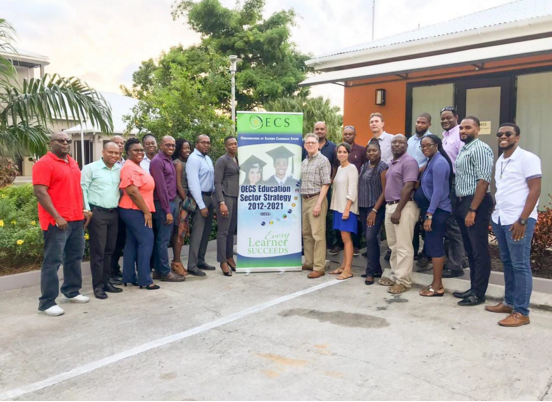All OECS schools to benefit from improved Internet connectivity

uesday, December 10, 2019 — The OECS-UNICEF initiative ‘ProjectConnect’ was successfully launched as part of a workshop held from 26-29 November, 2019 in Antigua and Barbuda.
The Organisation of Eastern Caribbean States (OECS) partnered with the United Nations Children’s Fund (UNICEF) to launch Project Connect, the first pillar of a wider project, namely the GIGA initiative, which seeks to connect every school in the world to internet and every young person to information, opportunity and choice.
ProjectConnect aims to map every school and to provide real-time data on the quality of their internet connectivity. Hence, the three-day workshop brought together 21 Information and Communications Technology Managers from OECS Ministries of Education, Statisticians, and Geographic Information System (GIS) professionals from across the Eastern Caribbean.
Participants benefited from a training session focused on collecting, editing and disseminating spatial and internet connectivity data on schools through the use of open source tools. The data will be critical in developing an evidenced-based strategy to provide all schools with fast and reliable internet access, as Head of OECS Education Development Management Unit, Sisera Simon, explained:
“Schools are sometimes faced with unreliable, and in some instances, unavailability of internet access, and this is an excellent initiative to fill that gap. ProjectConnect promotes access to information and will strengthen efforts to enhance technology-driven instruction and administration at the school level in the OECS region,” Simon said.
Representatives from UNICEF Eastern Caribbean in Barbados, UNICEF Innovation in New York and the International Telecommunications Union in Geneva, who also attended the launch of ProjectConnect, were enthusiastic about the initiative.
“This is the first of its kind regional school connectivity mapping workshop that we’ve organised with the aim of building local capacity on how to collect and maintain data around internet connectivity in schools.”
“The data will allow us to identify gaps and will be the foundation for follow-up work with OECS governments and internet providers, and build a common bid for connectivity that will ensure that all schools in the OECS region have access to the internet,” Data scientist at UNICEF Innovation, Naroa Zurutuza, said.
“The objective of GIGA is to create an entry point to opportunity and choice for every young person who is currently disconnected from the internet. Mapping the connectivity of every school is an essential first step in this process.
“This workshop has laid the groundwork to map all schools in the Eastern Caribbean including all their attributes, fulfilling the necessary conditions to implement the GIGA initiative in the region,” Senior Information and Communications Technology Analyst at the International Telecommunication Union added.
In closing, the representatives from the OECS Education Development Management Unit announced the intention to convene a major conference in early 2020 with senior government officials and technical officers from OECS governments; and development partners, which will aim to develop a road map for connecting all public primary and secondary schools in the Eastern Caribbean.
About the GIGA initiative
GIGA is an initiative of the United Nations Children’s Fund (UNICEF) which seeks to connect every school to the Internet, and every young person to information, opportunity and choice. GIGA is made up of four pillars:
- mapping the connectivity of every school to show where the connectivity demand is by using new technologies like Artificial Intelligence (AI) to create a real-time map of school locations and their connectivity level;
- financing a common bid that aggregates connectivity demand in schools (pooled across multiple countries) and creates a cost forecasting model to make connectivity more affordable;
- connecting every school to the Internet and create a monitoring system to oversee the level and quality of connectivity delivered by service providers; and
- empowering young people with skills by investing in, and scaling, open source solutions that–with connectivity– will be available to children, teachers, and administrators.





